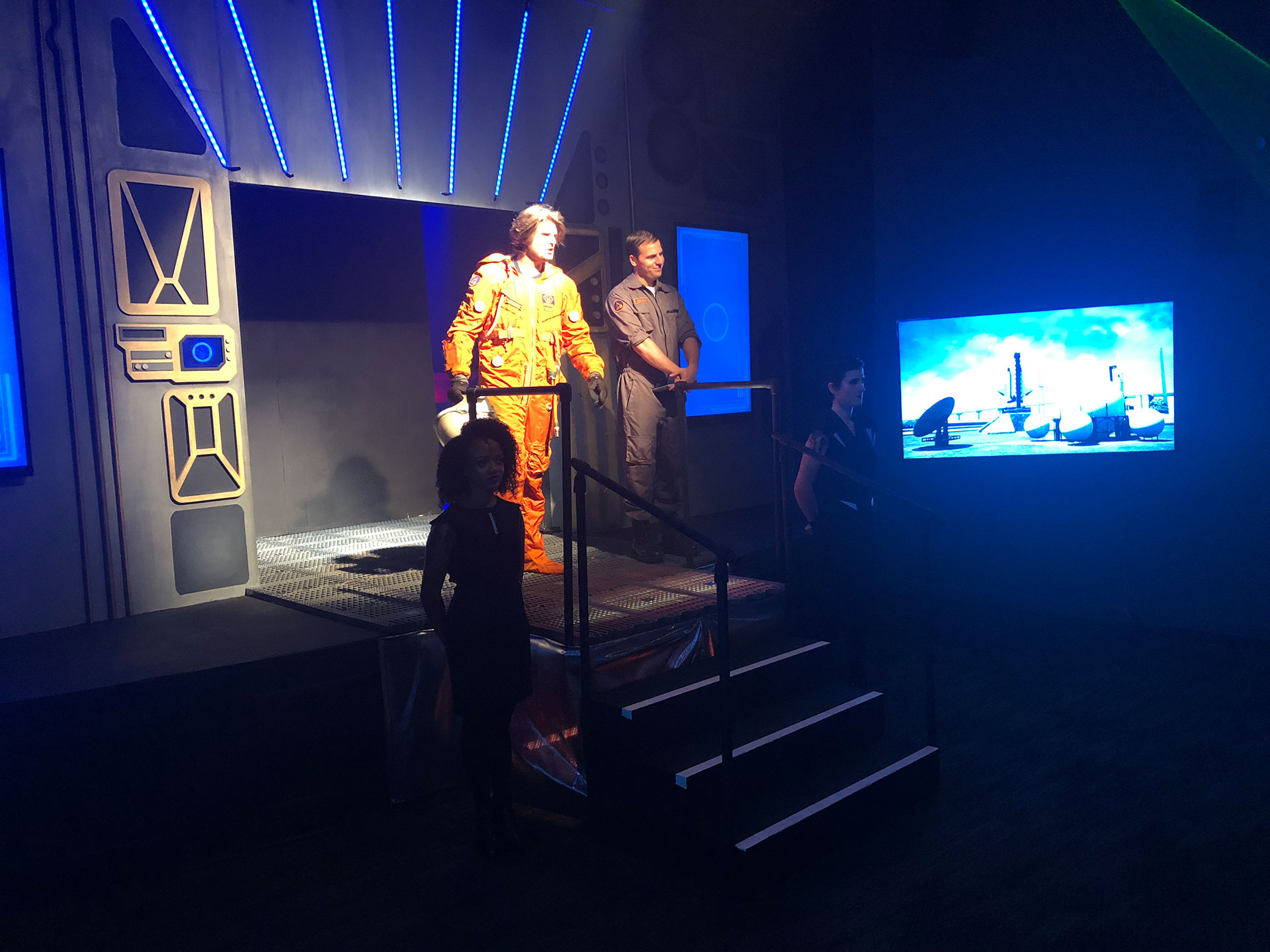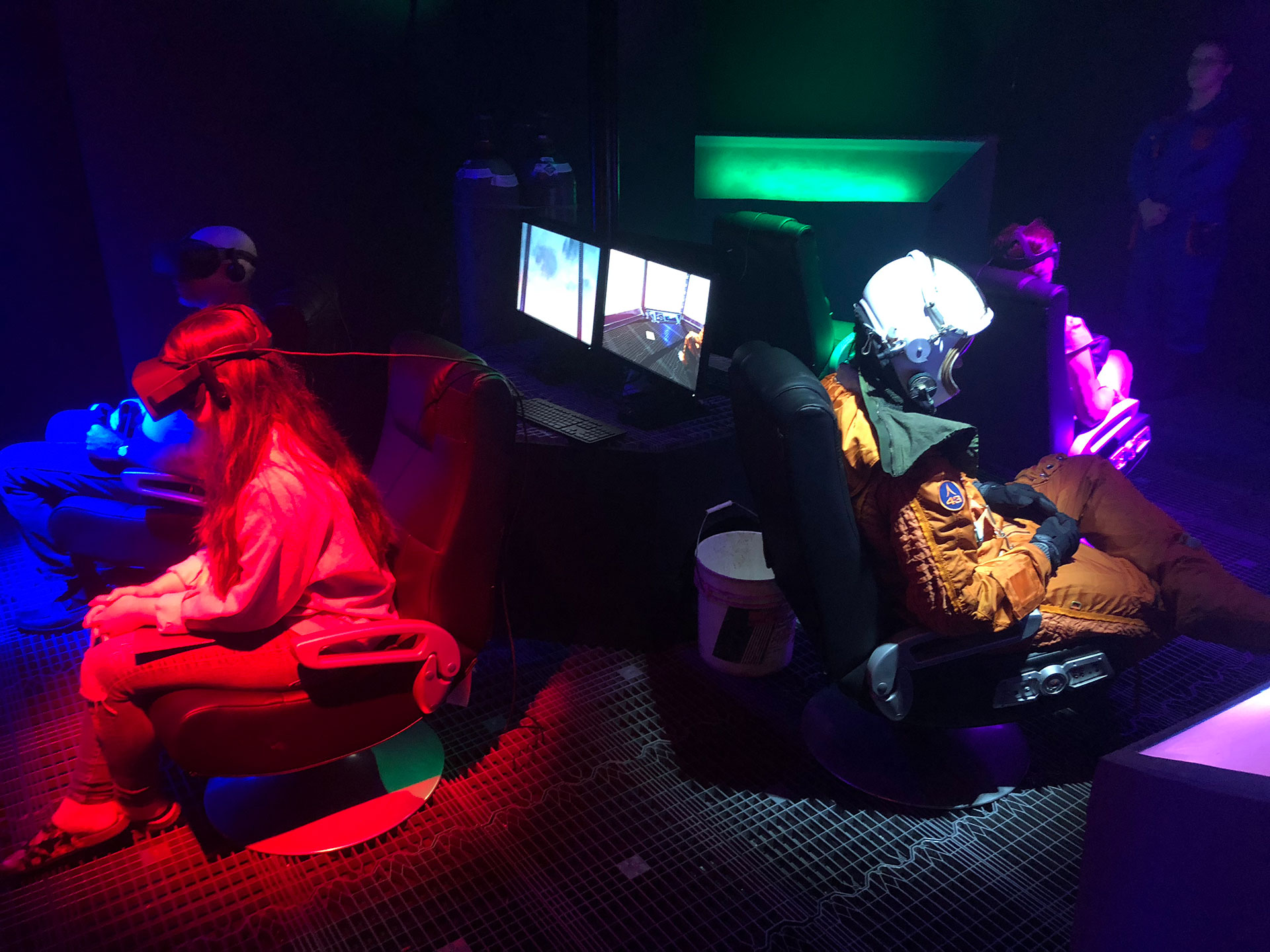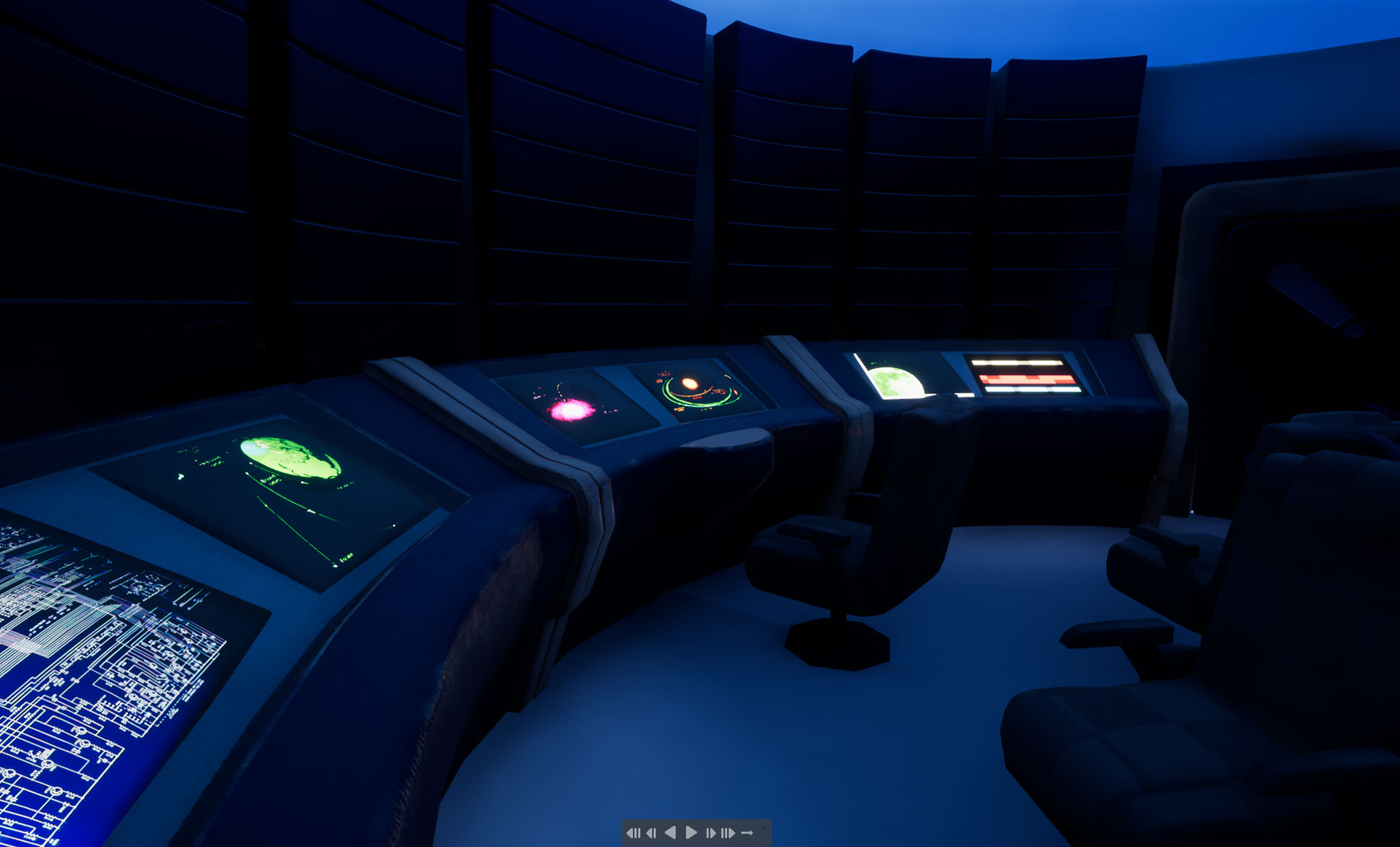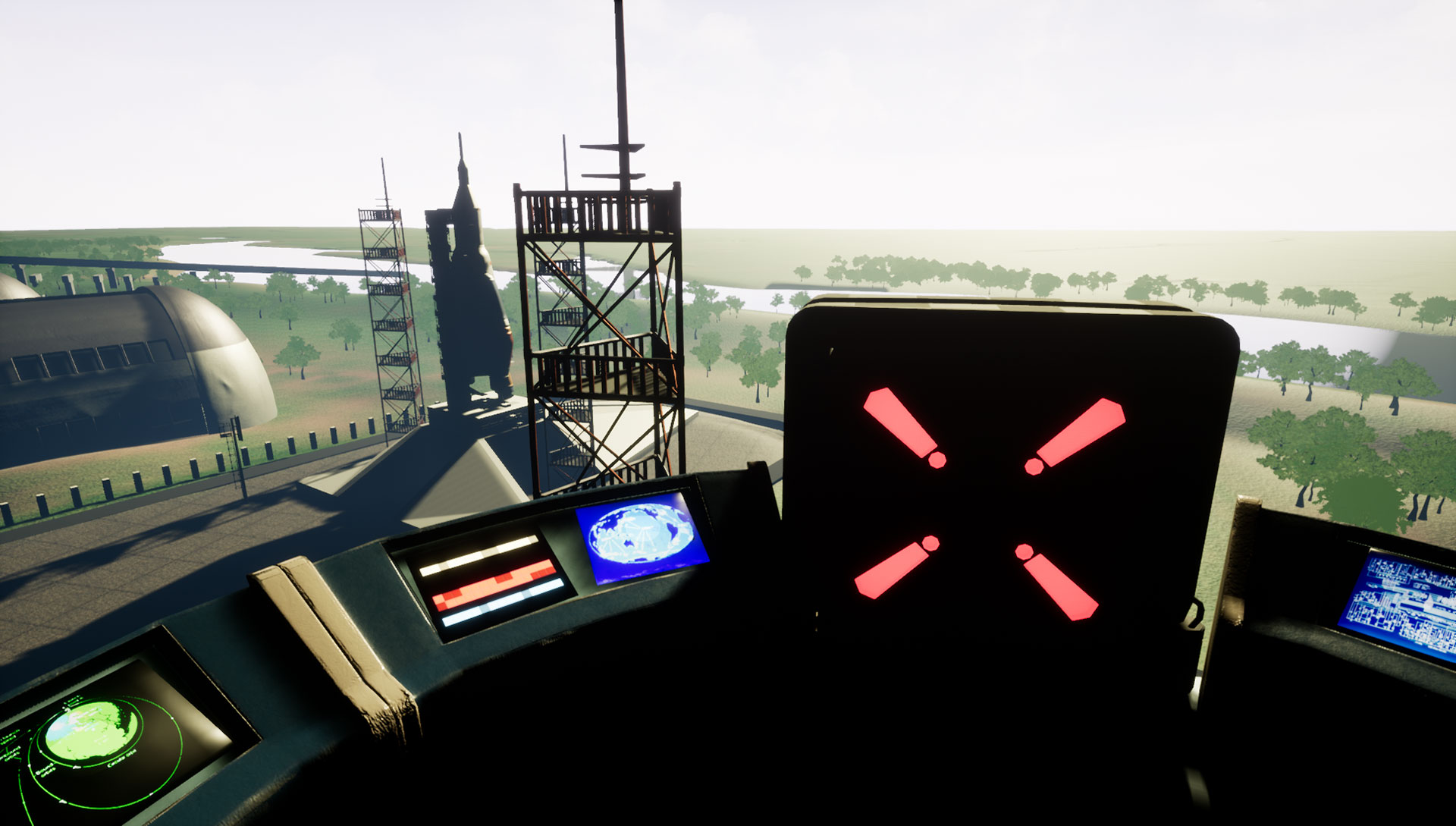December 6, 2018
Unreal Engine fuels “Destination Imagination” virtual reality immersive experience at SCAD
“Destination Imagination” is SCAD’s latest virtual reality project that takes the user on a thrilling journey into outer space, just escaping massive destruction on planet Earth. While SCAD allows students to choose their game engine, they turned to Unreal Engine because of its power and efficiency, robust interface, iteration time, and cinematics editor, Sequencer.
We caught up with Professor SuAnne Fu, Chair of the ITGM department at SCAD and Professor Jack Mamais, producer of the Destination Imagination Project to learn more about this exciting UE4 adventure, their new Immersive Reality program, and their thoughts on the future of VR and AR.


I understand you have an Immersive Reality program offered at SCAD, can you give us your thoughts on Virtual Reality?
SuAnne: In many ways, VR and AR isn’t very new. Flight simulations and HMDs have been around since the 70s, but what we are seeing is a revolution of interfacing with digital content. Both AR and VR are creating opportunities that allow the users to connect to digital content more immediately and in ways that are smarter and connected to their needs. This includes consideration for design that encompasses their full field of view, movement through VR and AR space, and connectivity to data that drives our experiences.
How are you preparing students today for the future of VR tomorrow?
SuAnne: Our program for the Immersive Reality major is concentrated on different applications of AR and VR. We are teaching our students not only the technical skills to create interactive content but design skills that also emphasize storytelling and user experience design, which in the end enhances the effectiveness of the overall product, whether it is a game, simulation/training, or visualization project.
What specific industries do you think benefit most from using VR?
SuAnne: If we are purely speaking of VR trends, the entertainment and simulations industries will benefit the most. The current external partners approaching us have varied from post-production houses, automotive/aircraft design, and education/training content driven studios. AR is currently more utilized by many of the advertising firms and has been ubiquitous in application as the end products can be readily available on your phone or mobile devices.
What type of courses are you offering?
SuAnne: We offer courses ranging from 3D content creation, UI/UX design, programming and added experience design considerations for VR and AR environments. We have been stuck on 2D screen space for so long that even the idea of creating for user’s gaze and full interactive 360 spaces have become an entirely new process. Designing for VR and AR has opened up issues of agency and re-examines the way we interface with digital content.
What role is Unreal Engine 4 playing in your programs?
SuAnne: Our Savannah campus is currently primarily using Unreal Engine for creating the VR content with our senior collaborative projects and projects with external partners. The program at SCAD allows students to specialize in areas of design, tech and art. UE4 has been instrumental in helping our students deliver professional results. With a solid toolset and lots of useful features, Unreal Engine makes it easy for students to quickly prototype games and projects with original mechanics and features. The amazing lighting and material features also help even the most ordinary project look professional with very little work.


Tell us about the students that are interested in VR. What inspires them?
SuAnne: Students interested in VR span several disciplines from animation, film, games, architecture, industrial design, and sound design. Many of these disciplines have dealt with spatial design of virtual content. Many of the students are driven by the innovation that they can create on the new VR and AR platforms. As an art and design school, most of the drive for these students is to connect to new ways on expressing their own art skills. It’s a wonderful attraction when we have finally been freed of limiting framing and camera perspectives.
Your on-campus VR room is very exciting! Can you tell us a little bit about this project?
Jack: We have recently expanded our department and are now offering courses in AR and VR so we needed an appropriate studio location in which to work. SCAD responded by refurbishing a large location we call the Shed, which features many permanent setups for VR and AR so students can quickly start working on this exciting discipline.
What inspired you to create this VR experience - “Destination Imagination”?
Jack: The idea of Destination Imagination combined theatrical and virtual experience that could be used to demonstrate to prospective students how SCAD’s various departments collaborate and can strengthen each other by coming up with compelling experiences that transport the participant to exotic locations. The vision included how the live action portion should be, and a high-level idea of what would happen when orbit was achieved. This inspired us to come up with various ideas before the details were ironed out.


How many students were involved in this project?
Jack: The entire project included the work of over 100 students across eight disciplines here at SCAD including departments such as Dramatic Writing, Performing Arts, Interactive Design and Game Development, Sound Design, and the new Immersive Reality department. Around 20 students contributed to the VR portion of the project that was done in UE4, with disciplines ranging from prop modeling and material work to FX artist, lighters, scripters, and sound designers.

Why did you choose to build this VR experience using Unreal Engine?
Jack: While SCAD allows students to use whatever game engines they choose to create their products, the power and approachability of the Unreal Engine make it a great tool for artists and designers to work with. They can quickly test the feasibility of their ideas. Unreal Engine 4 was used simply because it has the best fidelity and lighting available in modern game engines. Other engines were considered, but the linear requirements of this project benefited greatly from UE4’s new cinematics editor, Sequencer. Also, the rapid turnaround from the original proposal to first run was a total of six months, and by the time the final concepts were locked, there was only about three months of actual production time. UE4 allowed students to block out the experience rapidly and then iterate quickly based on feedback.
 Which features did you use in UE4?
Which features did you use in UE4?Jack: Destination Imagination used many features from Unreal Engine including the Sequence editor for keyframing, the Cascade editor for particle FX, and of course, the Blueprint editor for scripting. Since this is a linear experience, most of it is controlled through keyframing in Sequencer; we also used an event track to activate Actor Class Blueprints. This allowed us to create a linear experience with parameterized random elements such as rocket ships in the background that take off and land at different intervals every time the project is played, and objects that float in the air at different heights as the space capsule orbits the earth.
To learn more about the SCAD’s Immersive Reality Program, check out their program overview. If you are looking to build upon your Unreal Engine skills, we have free, on-demand video tutorials available at Unreal Engine Online Learning. Select a learning track to get started today!
